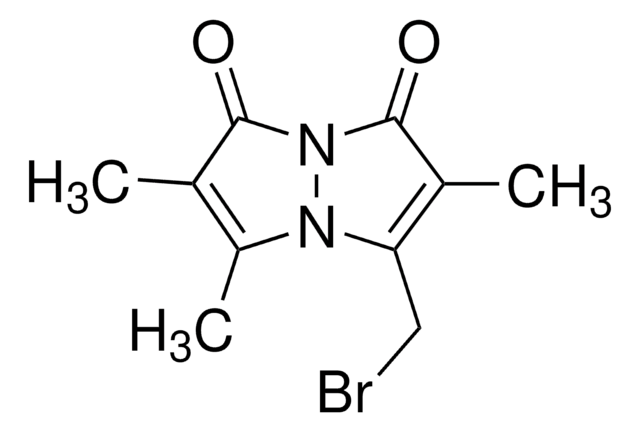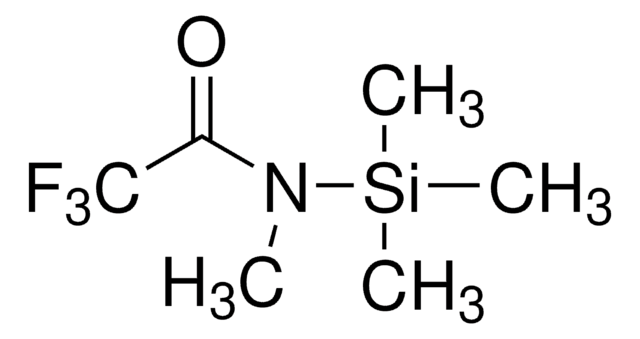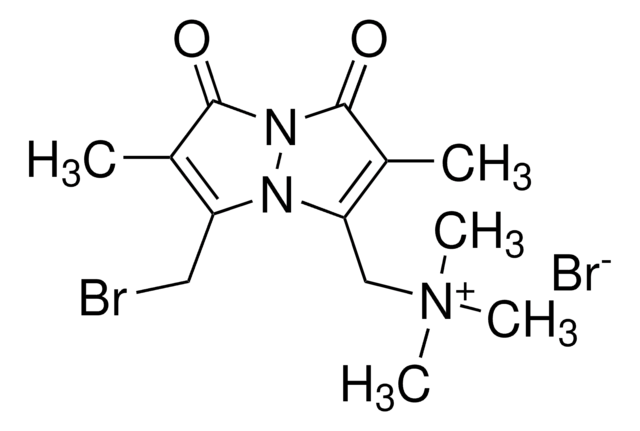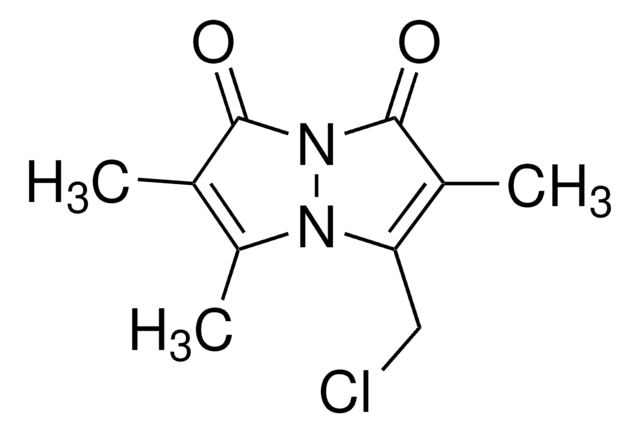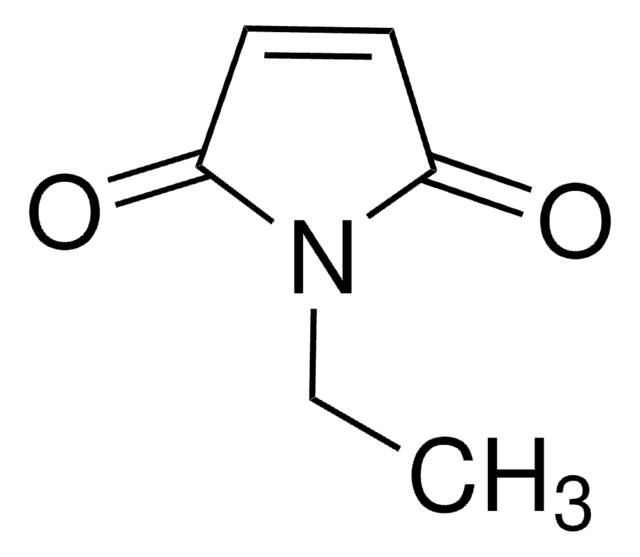69898
Bromobimane
suitable for fluorescence, BioReagent, ≥95% (HPCE)
Sinónimos:
Monobromobimane
About This Item
Productos recomendados
Línea del producto
BioReagent
Nivel de calidad
Ensayo
≥95% (HPCE)
Formulario
solid
mp
152-154 °C (lit.)
solubilidad
DMF: soluble
DMSO: soluble
acetonitrile: soluble
methanol: soluble
fluorescencia
λex 390 nm; λem 478 nm in 0.1 M phosphate pH 7.5 (after derivatization with glutathione)
λex 398 nm
idoneidad
suitable for fluorescence
temp. de almacenamiento
2-8°C
cadena SMILES
CC1=C(C)C(=O)N2N1C(CBr)=C(C)C2=O
InChI
1S/C10H11BrN2O2/c1-5-7(3)12-8(4-11)6(2)10(15)13(12)9(5)14/h4H2,1-3H3
Clave InChI
AHEWZZJEDQVLOP-UHFFFAOYSA-N
¿Está buscando productos similares? Visita Guía de comparación de productos
Categorías relacionadas
Descripción general
Aplicación
Características y beneficios
- Rapid reactivity.
- Ease of separation of derivatives by reverse HPLC.
- Ability to penetrate cells.
Envase
Otras notas
¿No encuentra el producto adecuado?
Pruebe nuestro Herramienta de selección de productos.
Código de clase de almacenamiento
11 - Combustible Solids
Clase de riesgo para el agua (WGK)
WGK 3
Punto de inflamabilidad (°F)
Not applicable
Punto de inflamabilidad (°C)
Not applicable
Equipo de protección personal
Eyeshields, Gloves, type N95 (US)
Elija entre una de las versiones más recientes:
¿Ya tiene este producto?
Encuentre la documentación para los productos que ha comprado recientemente en la Biblioteca de documentos.
Los clientes también vieron
Nuestro equipo de científicos tiene experiencia en todas las áreas de investigación: Ciencias de la vida, Ciencia de los materiales, Síntesis química, Cromatografía, Analítica y muchas otras.
Póngase en contacto con el Servicio técnico